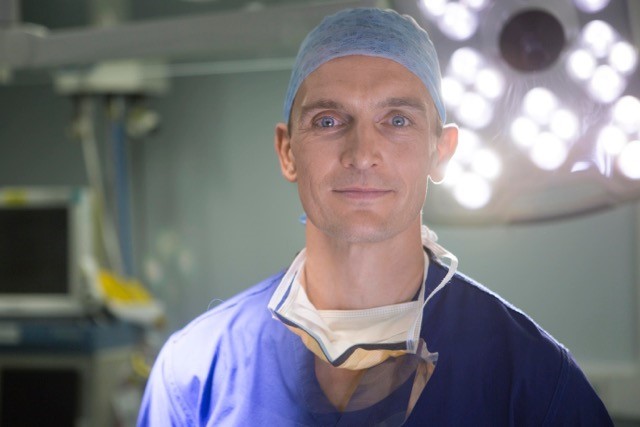With Cycle to Work Day around the corner on 8th August, Mr Dan Williams, hip and knee surgeon at the Duchy Hospital and the Royal Cornwall Hospital, tells us why he’s known to prescribe cycling to his patients.
Barbara is a 68-year-old woman with knee pain who limped into my outpatient clinic unable to walk more than a few hundred yards on the flat. She’s found herself doing less and less over the last 12 months and has put on a stone in weight. She has moderate ‘wear and tear’ osteoarthritis of the knee.
Halfway through our 15-minute consultation, I suggest that she buys or borrows an exercise bike to help with her knee. She looks at me confused:
“I can’t cycle because my knee hurts.”
Barbara
Barbara is not unusual in my, or any other hip or knee clinic across the UK. Osteoarthritis or OA of the hip or knee affects maybe 1 in 4 of us and a flare-up makes it harder to move around. We do less and find the muscles around the hip and knee get weaker, putting more stress through the joint.
While the advice following an acute injury is to rest, there is now more and more evidence that our approach to chronic pain needs a different approach, and exercise for hip and knee OA works.
Hip and knee OA symptoms are improved by slowly building back leg muscle strength. And low impact exercise bike cycling works well when the British weather outside is doing what it does best! It doesn’t matter whether I’m recommending surgery or not, my patients benefit from gently building back leg muscle strength.
So, I’ll say to my patient who I’ve just confused:
“Sure, if you cycle for 20 minutes today your knee will scream at you..!
“..but put the bike seat nice and high and turn the pedals for only 1 minute. Your knee will be a bit sore.. but you’ll be able to do another minute tomorrow..
“..then cycle 2 minutes a day in week 2..
“..3 minutes a day in week 3..
“..until you’re cycling 10-15 minutes most days.”
Dan Williams
Scaling up slowly is really important. Building back muscle strength without inflaming the hip or knee is a careful balance. As you get stronger, you’ll start to use your leg muscles more in everyday life.
A good one-year aim for you might be to stand slowly from sitting with your arms crossed (a set number of times, perhaps), without using the arms of a chair or swinging your upper body to get up. If you can already do this aim to stand from sitting using mostly one leg. Single leg controlled (sit to) standing is hard but regular cycling is the way to get there and the extra strength will help you to manage your hip or knee symptoms.
I reviewed Barbara’s progress a few weeks ago. She’s really enjoying cycling as part of her routine and is cycling a couple of laps around the Isles of Scilly most days over the summer. She uses her exercise bike indoors, listening to The Archers on the radio, whenever it’s raining.
We should all be doing the recommended 150 minutes of moderate exercise per week, aiming to get a bit out of breath. If you get the first twinge of hip or knee pain, ask yourself if you could benefit from building back some muscle strength.
Cycle to Work Day is 8th August and a great moment to get back on your bike. It doesn’t matter if you haven’t cycled in years or have never cycled at all.
Mr Dan Williams is a hip and knee surgeon at Duchy Hospital, part of Ramsay Healthcare, and the Royal Cornwall Hospital, where he helped establish a Virtual Clinic with the support of the Health Foundation. He was one of the original founders of My Clinical Outcomes and co-hosts LifetimeHip. You can find his profile here.
